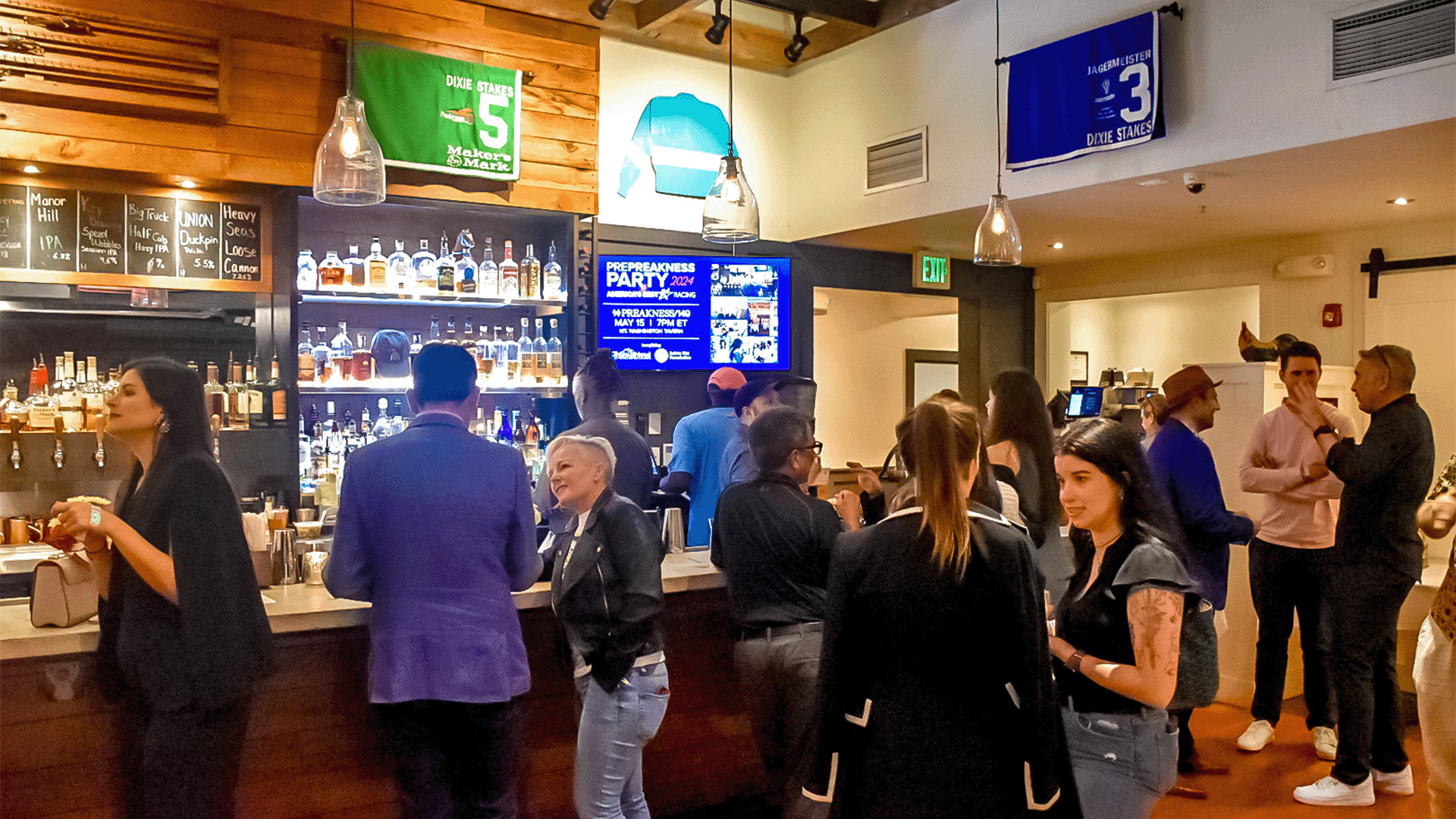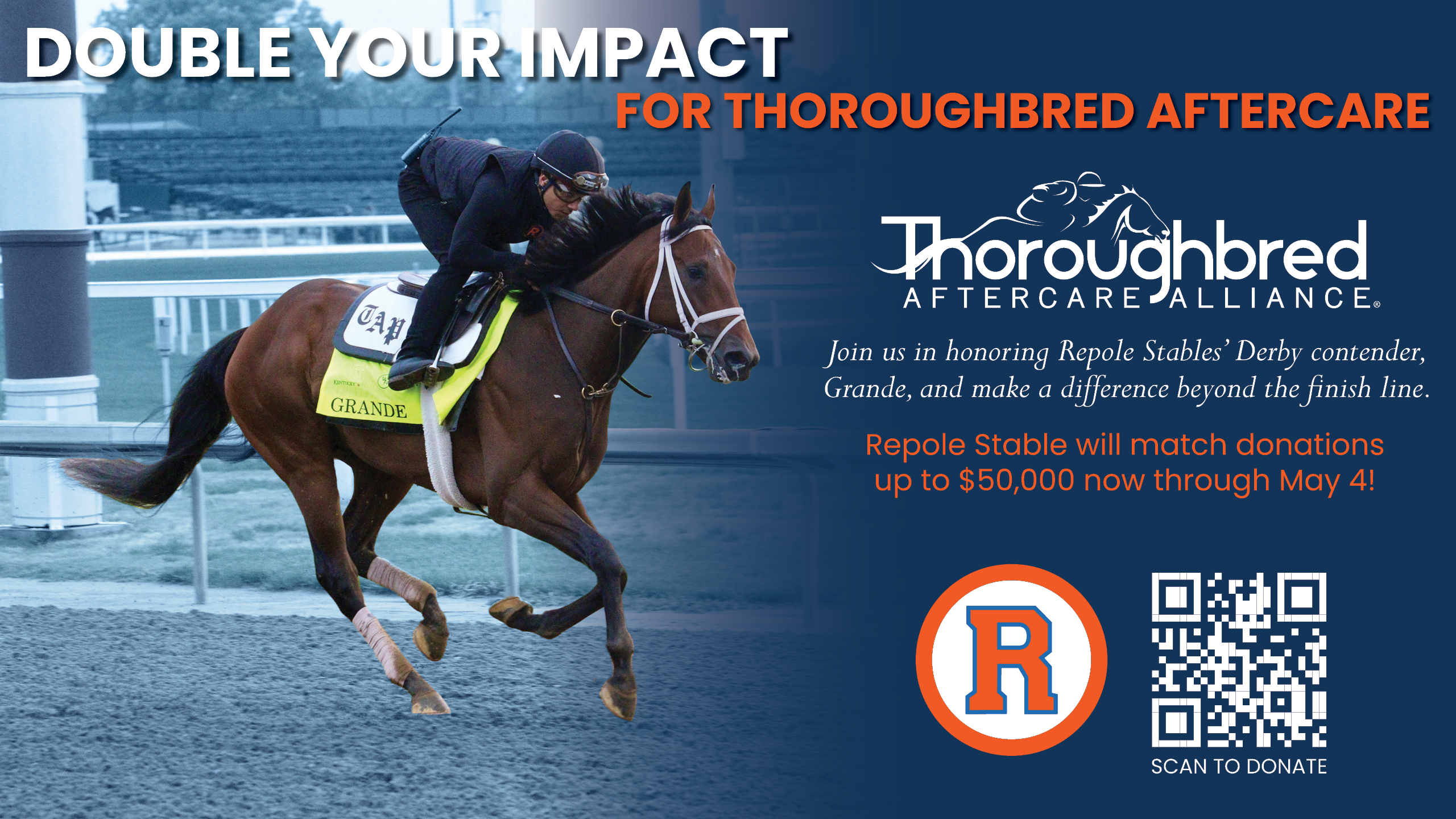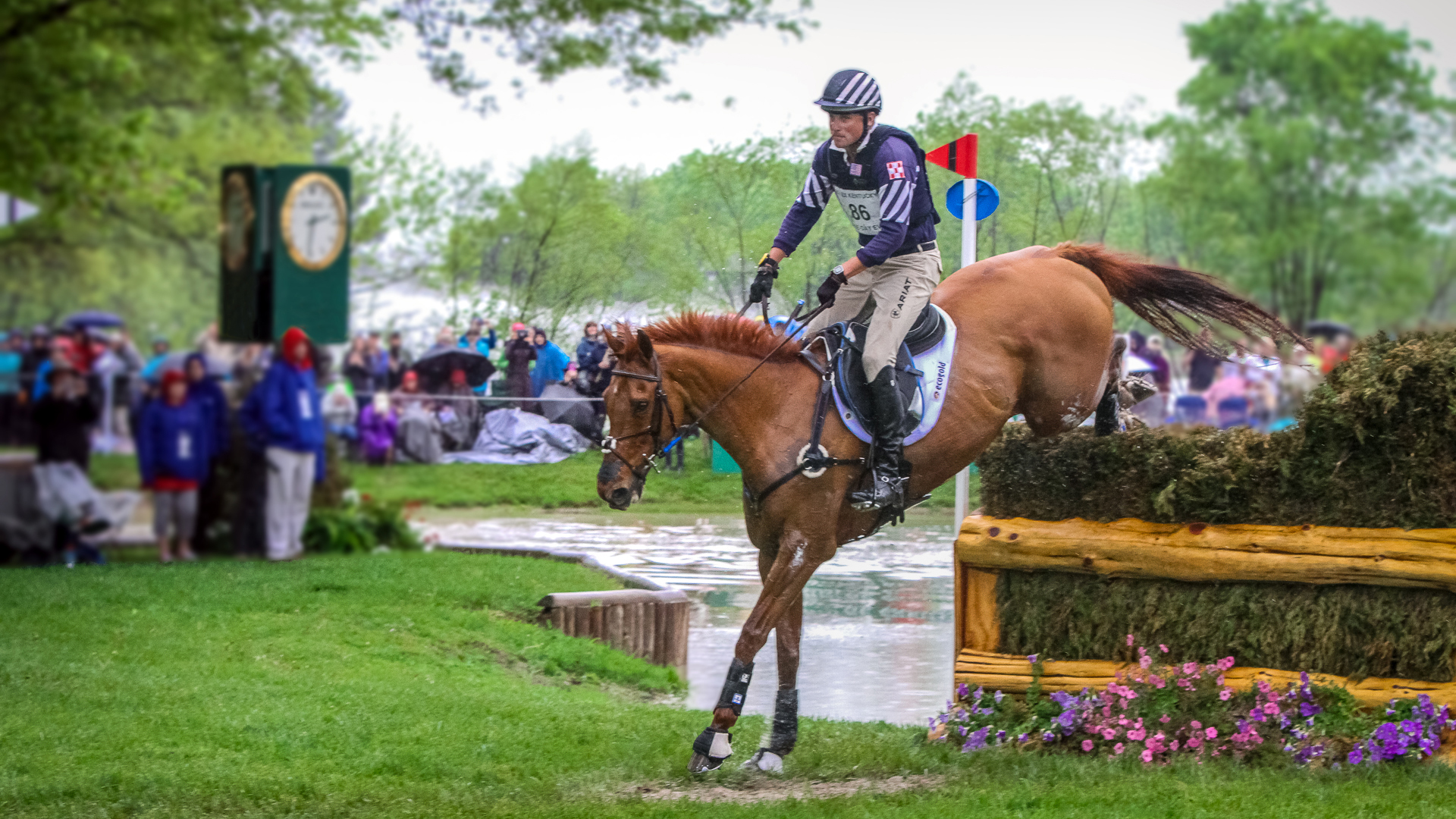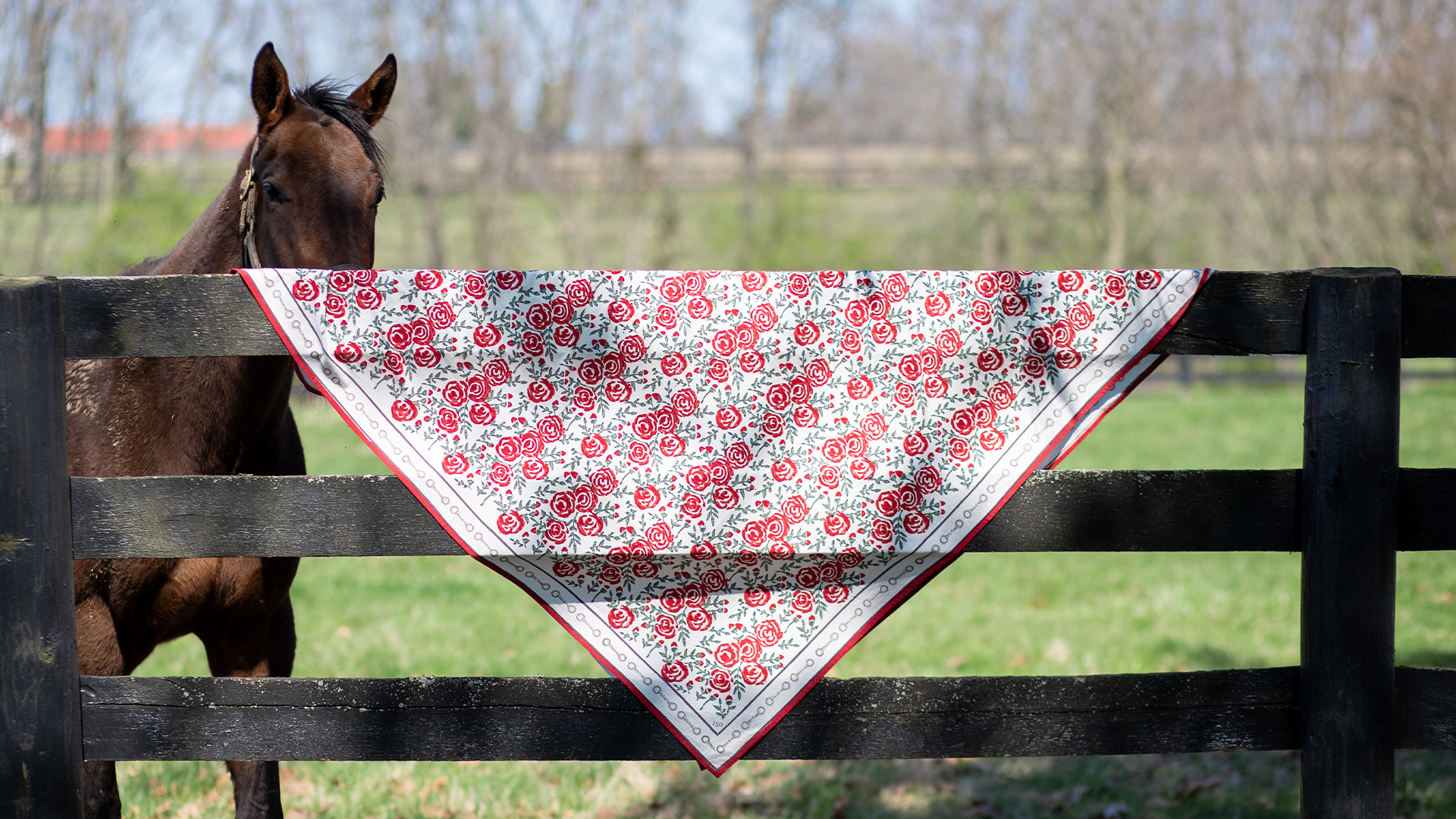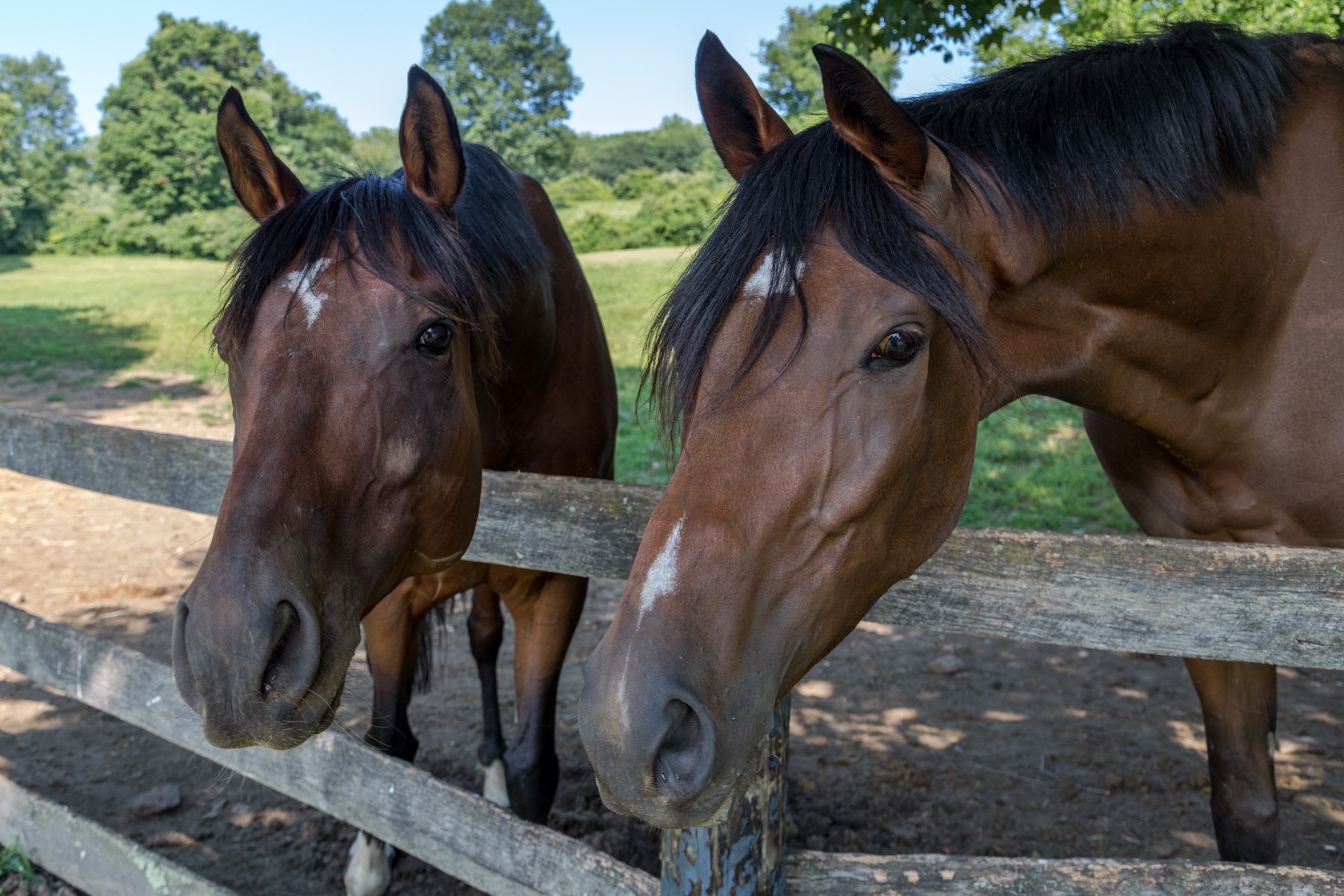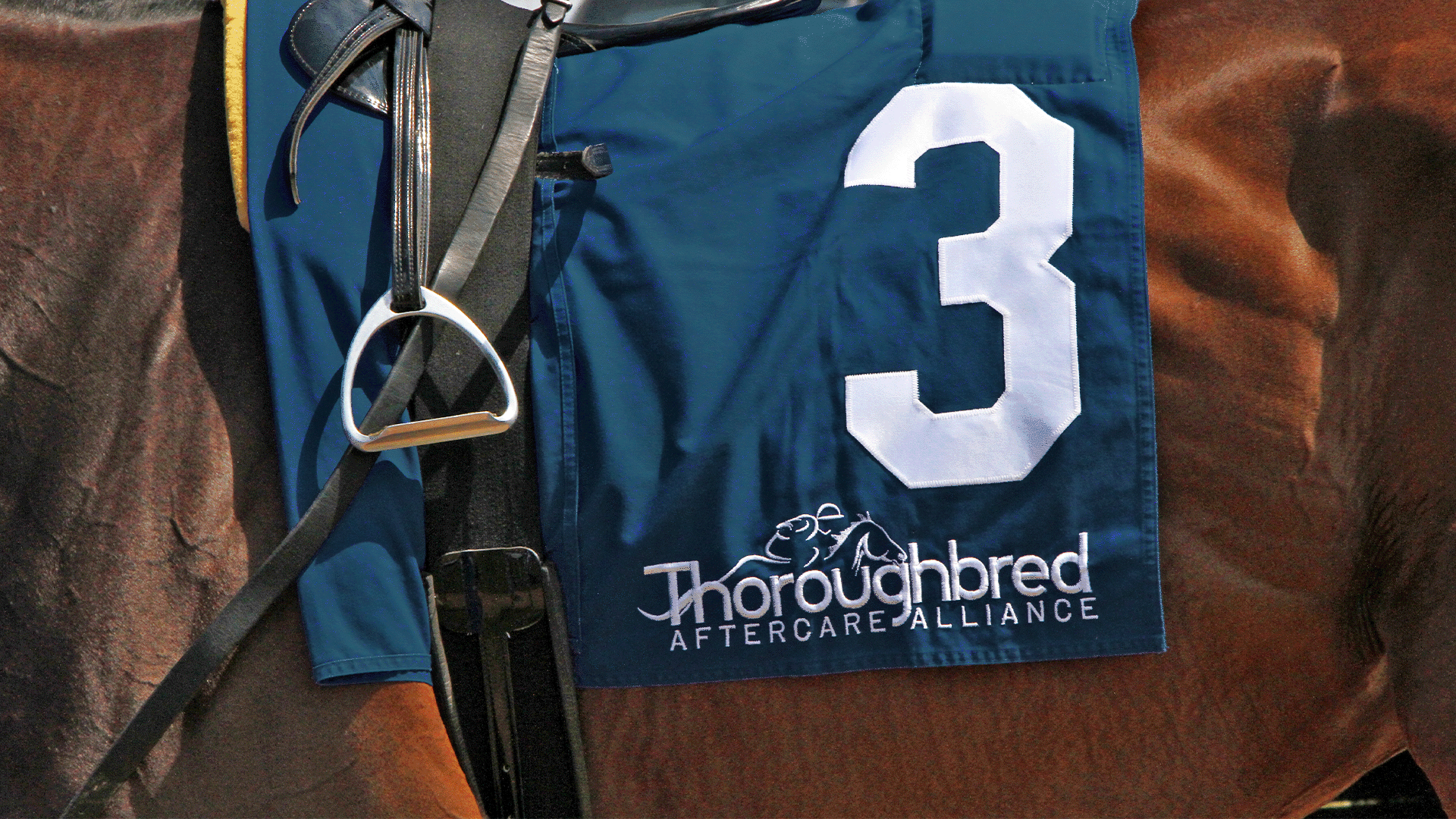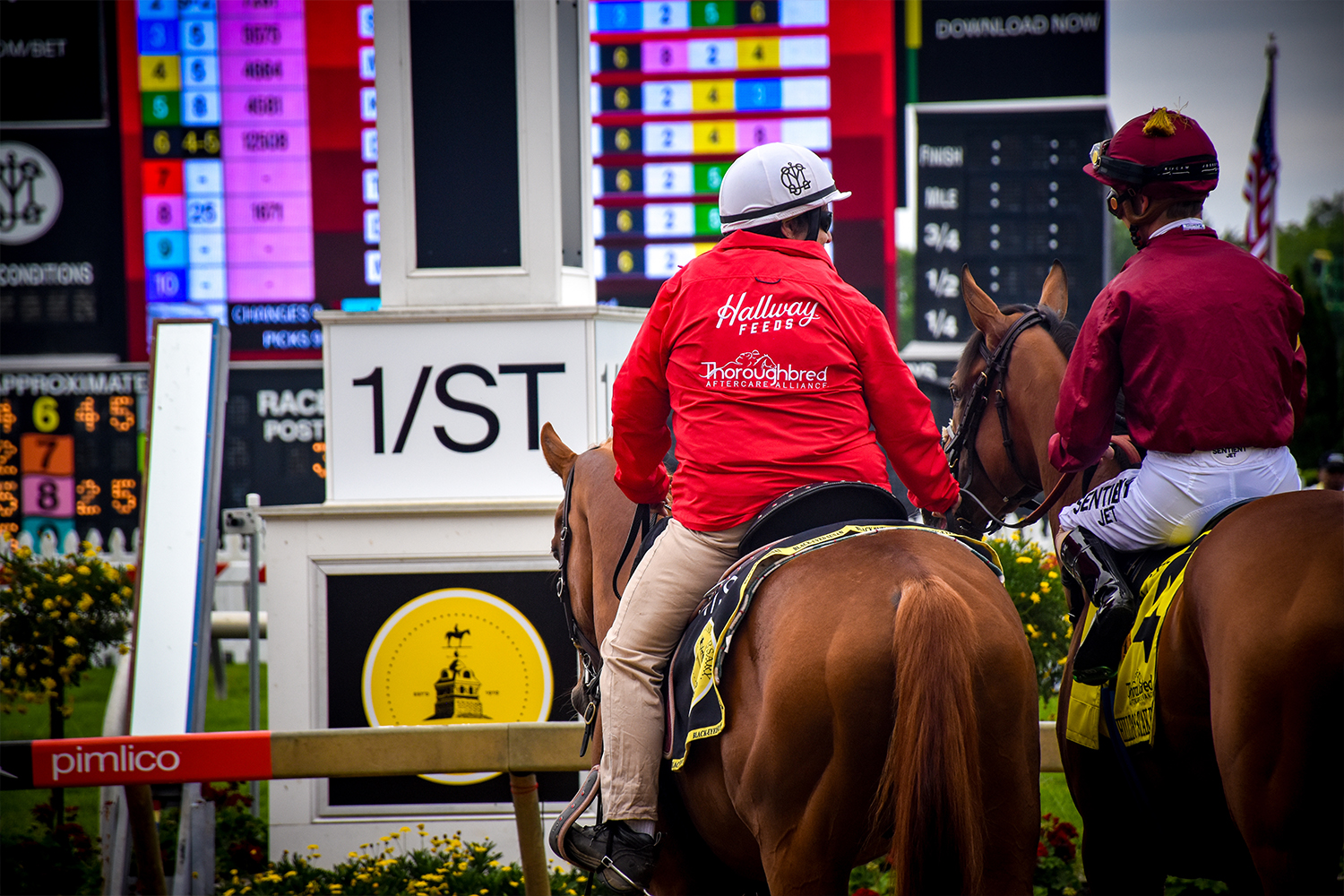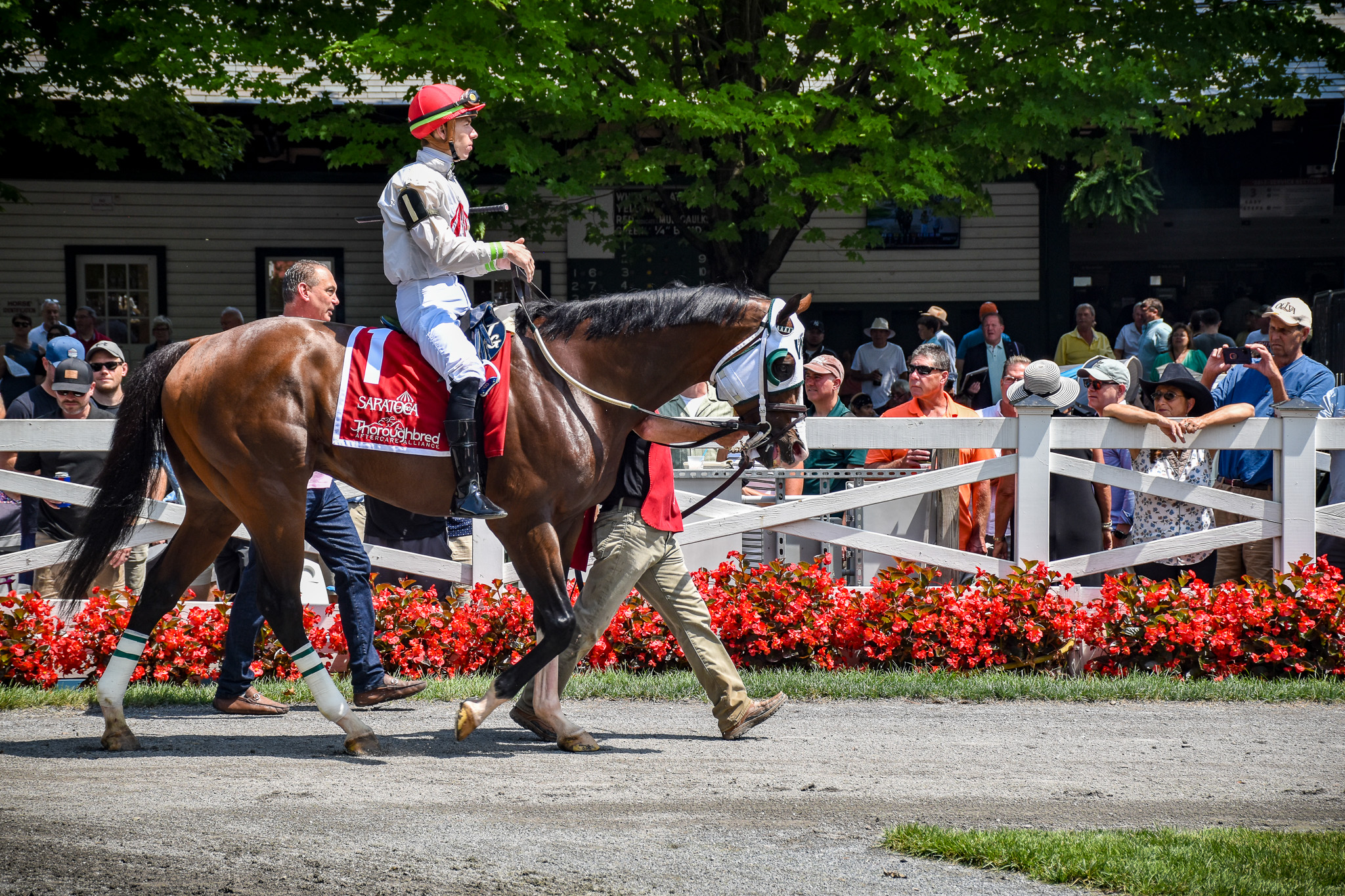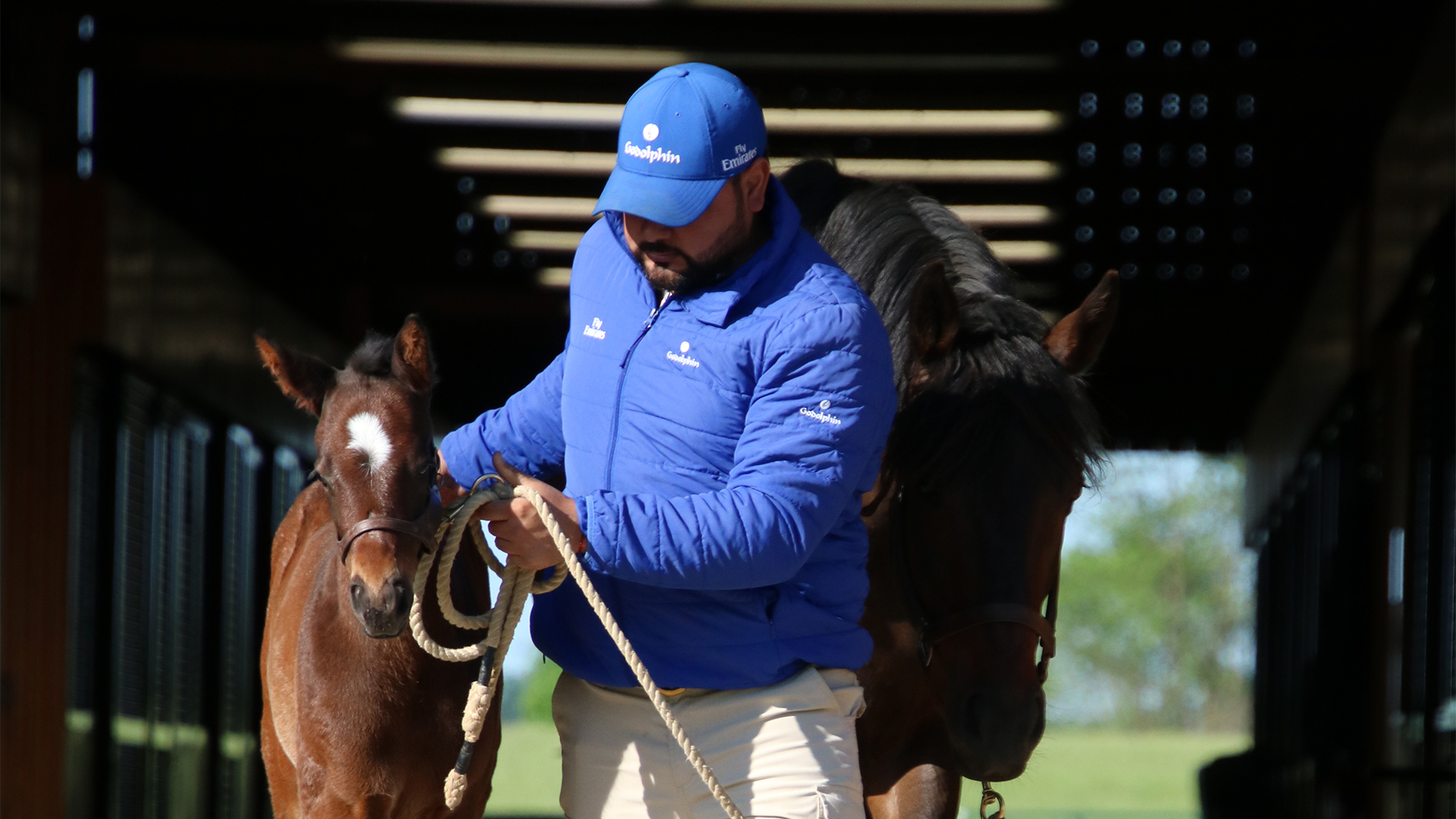Industry Stakeholder
All Items Success Stories Aftercare Editorials Retraining Tips Supporter Features Equine-Assisted Learning Inspector Spotlights Hamburger Toggle Menu The 10th Annual ABR Pre-Preakness Party: A Night of Fun and Philanthropy The 10th Annual ABR Pre-Preakness Party: A Night of Fun and Philanthropy By: Jay Privman May 7, 2025 Tags: Years before he got into racing professionally, back when he was a college-aged fan, Dan Tordjman attended an event prior to the Belmont Stakes at which jockeys and trainers mingled with the patrons. He was awestruck. “I walked up to John Velazquez – I was trembling – and he was so cool,” Tordjman recalled. “That planted the seed. It left an impression. It had an impact. If fans of the sport can meet jockeys and trainers and have an interaction, it could take the fan on a trajectory to anything.” That trajectory will lead to the Mt. Washington Tavern, just north of Baltimore and only minutes from Pimlico Race Course, on Wednesday night, May 14, when America’s Best Racing (ABR) puts on its 10th Pre-Preakness Party, three days before the historic 150th running of the Preakness at Pimlico. Tordjman, who has worked for ABR for more than a decade and is now the Vice President of The Jockey Club Media Ventures, parent company of ABR, helped launch the Pre-Preakness Party, hoping to repeat for others the experience he had as a fan all those years before. “It’s a party meant for everyone,” Tordjman said. “It’s accessible, affordable, and a lot of fun.” It also helps raise funds and awareness for Thoroughbred Aftercare Alliance, as well as the The Jockey Club Safety Net Foundation, the Permanently Disabled Jockeys Fund, and the Ed Brown Society – which highlights the extensive history of African-Americans in racing and helps to increase opportunities for young people of color in the sport. There will be a silent auction, for people in attendance as well as those bidding remotely. “There will be a lot of memorabilia, halters, farm visits, a lot of cool stuff,” Tordjman said. “Not everyone who supports Thoroughbred Aftercare Alliance can attend, but they can support the event by gifting tickets, donating to the silent auction, or bidding on items. Those in attendance can get jockeys to sign autographs. It’s a party for the fans. It’s Maryland-themed, and Preakness-centric.” Load More End of Content. Tickets cost $35 in advance, or $50 at the door, and include one drink ticket and a buffet of some of Mt. Washington Tavern’s top food items, like their famous crab cakes. The first of these events was held in 2014, and it has been held annually except for Covid-related interruptions in 2020 and 2021. Over the years, Tordjman said the event has raised tens of thousands of dollars for Thoroughbred Aftercare Alliance. “It’s still our signature event, and in addition it raises awareness for aftercare,” he said. “It helps raise awareness of the incredible work Thoroughbred Aftercare Alliance does. A lot of fans of the sport are passionate about what happens to horses when their racing careers are over. Those fans are doing what they can to make sure horses have a soft landing.” The Maryland Jockey Club, which owns Pimlico, is the title sponsor of the event. Ambassador Earle Mack, a long-time horse owner, is the supporting sponsor. Tickets can be purchased on-line at bit.ly/ABRPartyTickets To register for the auction and be able to bid, go to thoroughbredaftercare.org/abr-pre-preakness-party Share This Article Learn more about Thoroughbred Aftercare Alliance’s supporters: Industry Stakeholders
Read More >All Items Press Releases In the News Hamburger Toggle Menu Previous Post Repole Stable Celebrates Kentucky Derby with Matching Donation to Thoroughbred Aftercare Alliance Repole Stable Celebrates Kentucky Derby with Matching Donation to Thoroughbred Aftercare Alliance FOR IMMEDIATE RELEASE April 29, 2025 News Tags:Industry Stakeholder, Kentucky Derby, Match Sponsor, Mike Repole, Repole, Repole Stable, Supporters, Thoroughbred Aftercare, Thoroughbred Aftercare Alliance LEXINGTON, KY – Mike Repole has generously pledged support to Thoroughbred Aftercare Alliance through a matching campaign throughout the week leading up to the Kentucky Derby. In honor of Repole Stables’ Derby entrant, Grande, Repole will match donations up to $50,000, presenting a unique opportunity for the racing community and charitable donors to make a meaningful impact for retired racehorses. The matching initiative begins on April 28 and extends through May 4. “Every Thoroughbred athlete deserves an enjoyable and quality retirement. I am honored to support Thoroughbred Aftercare Alliance and their mission of accredited aftercare,” said Mike Repole, Owner of Repole Stable. “I encourage others to join me in making a charitable donation during one of the most anticipated weeks of the racing year. Let us all raise awareness and do our part in ensuring these athletes receive the best, well-deserved protection as they transition beyond the finish line. It is our responsibility, and we all owe it to these amazing loving Thoroughbred athletes.” Repole expressed his hope that the matching campaign would act as a catalyst, inspiring additional contributions throughout the week leading up to the Kentucky Derby. By doubling the impact of donations, Repole aims to encourage others to support accredited aftercare, underscoring the importance of providing retired Thoroughbred racehorses with the highest level of quality care and second-chance opportunities. In a fun effort to spread awareness of this week-long initiative, Thoroughbred Aftercare Alliance and Repole Stable invite fans and supporters to cheer on their favorite Kentucky Derby contender by donating to help support future placement and retirement of racehorses. “Thoroughbred Aftercare Alliance is deeply grateful for Mike Repole’s extraordinary $50,000 pledge. His commitment sets the tone for all of us to rally together and make an even greater impact. Join us in honoring his generosity by contributing to support our retired Thoroughbred racehorses,” said Emily Dresen, Director of Funding and Events, Thoroughbred Aftercare Alliance. This collaborative effort underscores the commitment of individuals, such as Repole, to ensuring the welfare and appropriate retirement of these equine athletes after racing. Contributions can be made by check, text, or online donation. To donate online visit: org/donation_now To donate by text message: text DONATE to 855-800-4975 To donate by check: mail with attention to Thoroughbred Aftercare Alliance at 821 Corporate Drive, Lexington, KY 40503 About Thoroughbred Aftercare Alliance Based in Lexington, KY, Thoroughbred Aftercare Alliance is a 501(c)(3) nonprofit that accredits, inspects, and awards grants to approved aftercare organizations to retrain, retire, and rehome Thoroughbreds using industry-wide funding. Along with continued funding from its original partners Breeders’ Cup, The Jockey Club, and Keeneland Association, Thoroughbred Aftercare Alliance is supported by owners, trainers, breeders, racetracks, aftercare professionals, and other industry members. Since its inception in 2012, Thoroughbred Aftercare Alliance has granted more than $36.04 million to accredited aftercare organizations. Currently, 83 aftercare organizations comprised of approximately 175 facilities across North America have been granted accreditation. To learn more about Thoroughbred Aftercare Alliance, visit thoroughbredaftercare.org. Contact Thoroughbred Aftercare Alliance859-224-2756info@thoroughbredaftercare.org Fundraising & EventsEmily Dresen352-362-6934edresen@thoroughbredaftercare.org Media ContactSamantha Smith Share This Release
Read More >All Posts & News Press Releases Success Stories Aftercare Editorials Retraining Tips Supporter Features Equine-Assisted Learning Inspector Spotlights Hamburger Toggle Menu Previous Post Supporter Feature: Aftercare Partner IFAR Brings Global Conversation to Lexington Supporter Feature: Aftercare Partner IFAR Brings Global Conversation to Lexington By: Jay Privman April 16, 2025 Supporter Feature Tags:Aftercare Partner, IFAR, Industry Stakeholder, International Forum for the Aftercare of Racehorses, supporter, Supporter Feature, Thoroughbred Aftercare Alliance Supporter The growing realization of the need for sustained Thoroughbred aftercare has become of worldwide importance in recent years, and this year the biggest event in the space, the International Forum for the Aftercare of Racehorses (IFAR), is coming to the United States, to Lexington, Ky., April 24-26. Thoroughbred Aftercare Alliance will have a significant presence at IFAR, whose opening-day panels will be held at Spy Coast Farm’s Equine Education Center on Newtown Pike, north of downtown Lexington, adjacent to the Kentucky Horse Park. The event will overlap with the prestigious Defender Kentucky Three-Day Event, held the same weekend in Lexington. “This is a great opportunity for Thoroughbred Aftercare Alliance to have a presence, to demonstrate that Thoroughbreds are versatile, adaptable, and sought-after, to highlight their successes, and raise awareness that they are great options for sport horses,” said Kristin Werner, the deputy general counsel and director of industry initiatives for The Jockey Club — one of the founders of Thoroughbred Aftercare Alliance — and the chair of the conference committee for IFAR. “During the three-day event, Thoroughbreds will be highlighted for their top-level versatility. It’s a cool opportunity to see Thoroughbreds doing something other than racing — see them going over jumps, see them doing dressage, see why it’s so important to recognize what they can do as sport horses,” Werner said. Four-time Olympian Boyd Martin will be the keynote speaker on opening day at the event, which in subsequent days will include on-site visits at accredited aftercare facilities in the area, and a social gathering during the cross-country portion of the Defender Kentucky Three-Day Event. Jen Roytz, co-owner of Brownstead Farm and active Thoroughbred Aftercare Alliance supporter, will serve as moderator for the conference. Stacie Clark-Rogers, operations consultant for Thoroughbred Aftercare Alliance, is among the panelists on the Thoroughbred Aftercare Alliance-sponsored panel “Connections Through Thoroughbreds,” which will focus on sourcing and preparing horses for therapeutic services. Martin pictured with Thoroughbred Blackfoot Mystery at a past Kentucky Three-Day Event. PC: Thoroughbred Aftercare Alliance. Erin Halliwell, executive director of the Thoroughbred Charities of America, and John Nicholson, president and chief executive officer of Thoroughbred Aftercare Alliance-accredited Old Friends, are on a panel focusing on “Sustainable Business Practices in Aftercare” for non-profits, including succession planning and preparedness for emergencies. Dr. Bryan Waldridge, a veterinarian for Old Friends, and Ashley Watts, owner of Liftoff Equestrian, which houses and trains horses for Thoroughbred Aftercare Alliance-accredited Canter Kentucky, are on the panel “Challenges in Aftercare: On-Track to Second Career,” which will address challenges horses face transitioning from racing to second careers. Thoroughbred Aftercare Alliance’s Dr. Jeff Berk, and Anna Ford, Thoroughbred Program director of Thoroughbred Aftercare Alliance-accredited New Vocations Racehorse Adoption, will opine on “Post-Racing Veterinary Evaluations,” focusing on best practices in post-racing assessments to identify horses suited for second careers, including those with less visible vulnerabilities. Kirsten Green, executive director of Thoroughbred Aftercare Alliance-sponsored Retired Racehorse Project, is on the panel “Raising Awareness Through Events,” which will discuss leveraging horse shows and other events to raise funds and awareness for Thoroughbred aftercare globally. “This year the focus will be on two objectives — sharing best practices for aftercare, and promoting the versatility of Thoroughbreds.” Kristin Werner Deputy General Counsel and Director of Industry Initiatives for The Jockey Club IFAR is an independent forum that recognizes geographical and industry differences among racing countries and is designed to enhance Thoroughbred aftercare worldwide. It has previously conducted forums in conjunction with the 40th Asian Racing Conference (ARC) in Sapporo, Japan in August 2024; the 39th ARC in Melbourne, Australia in February 2023; the 38th ARC in Cape Town, South Africa, in February 2020; the European & Mediterranean Horseracing Federation’s General Assembly in Oslo, Norway, in May 2019; the 37th ARC in Seoul, South Korea, in May 2018; and the Pan American Conference in Washington, D.C., in May 2017. Virtual conferences were held in 2021 and 2022 owing to the pandemic. “This year,” Werner said, “the focus will be on two objectives — sharing best practices for aftercare, and promoting the versatility of Thoroughbreds.” The overlap with Defender presents additional opportunities for Thoroughbred Aftercare Alliance to engage with an even wider audience. “Thoroughbred Aftercare Alliance is going to have a major presence at Defender, because it’s the largest concentration of horse shopping opportunities you can find,” Werner said. PC: Suzie Picou-Oldham Learn more about Thoroughbred Aftercare Alliance’s supporters: Industry Stakeholders Share This Article
Read More >All Items Press Releases In the News Hamburger Toggle Menu Previous PostNext Post Thoroughbred Aftercare Alliance to Partner with Pomegranate Inc. to Celebrate 151st Kentucky Derby Thoroughbred Aftercare Alliance to Partner with Pomegranate Inc. to Celebrate 151st Kentucky Derby FOR IMMEDIATE RELEASE April 4, 2025 News Tags:Gainesway, Gainesway Farm, Industry Stakeholder, Kentucky Derby, Pomegranate Inc., Run for the Roses, Supporters, Thoroughbred Aftercare, Thoroughbred Aftercare Alliance LEXINGTON, KY – Thoroughbred Aftercare Alliance is partnering with Pomegranate Inc. to celebrate the 151st running of the Kentucky Derby with their limited-edition Run for the Roses 151 Collection. Pomegranate Inc. offers handcrafted home décor, table linens, and accessories inspired by nature and global artistry, with their unique equestrian designs reflecting this tradition. Pomegranate is donating 15% of sales from the Run for the Roses 151 collection line to Thoroughbred Aftercare Alliance, available now through the running of the Kentucky Derby. This exclusive collection commemorates the running of the 151st Kentucky Derby featuring a hand stamped “151” and a special limited edition sewn in label. To ensure timely delivery: Ground shipping orders must be placed by April 24. Two-day shipping orders must be placed by April 28. Overnight shipping orders must be placed by April 29. Visit the Pomegranate Flagship Store at 700 East Main St., Lexington, Kentucky 40502, (at the corner of Clay Ave. and Main St.), or shop online at:pomegranateinc.com/pages/run-for-the-roses There will be a Sip and Shop to support Thoroughbred Aftercare Alliance at the Pomegranate Flagship store on April 17 from 5pm-8pm ET. Angela Vineyard Wines will be available by the glass or bottle, as well as light bites provided by Penny’s at Pomegranate by Chef Ouita Michel. Thoroughbred Aftercare Alliance will have a booth April 24-27 at the 2025 Defender Kentucky Three-Day Event, where the collection will also be on display for in-person viewing. “We’re thrilled to partner with Thoroughbred Aftercare Alliance once again to celebrate the Kentucky Derby with our Run for the Roses 151 Collection,” said Angela Beck, Founder & Creative Director at Pomegranate Inc. “Living on Gainesway Farm and being part of a family dedicated to raising Thoroughbred racehorses makes this cause especially meaningful. Supporting accredited aftercare for retired Thoroughbreds is close to our hearts, and we’re happy to be able to contribute to TAA’s mission.” “We’re grateful for Pomegranate’s generosity and their commitment to supporting Thoroughbred Aftercare Alliance,” said Emily Dresen, Director of Funding & Events, Thoroughbred Aftercare Alliance. “This collaboration is a wonderful opportunity to raise awareness and funds to ensure retired racehorses receive the care they deserve.” About Thoroughbred Aftercare Alliance Based in Lexington, KY, Thoroughbred Aftercare Alliance is a 501(c)(3) nonprofit that accredits, inspects, and awards grants to approved aftercare organizations to retrain, retire, and rehome Thoroughbreds using industry-wide funding. Along with continued funding from its original partners Breeders’ Cup, The Jockey Club, and Keeneland Association, Thoroughbred Aftercare Alliance is supported by owners, trainers, breeders, racetracks, aftercare professionals, and other industry members. Since its inception in 2012, Thoroughbred Aftercare Alliance has granted more than $36.04 million to accredited aftercare organizations. Currently, 83 aftercare organizations comprised of approximately 175 facilities across North America have been granted accreditation. To learn more about Thoroughbred Aftercare Alliance, visit thoroughbredaftercare.org. Contact Thoroughbred Aftercare Alliance859-224-2756info@thoroughbredaftercare.org Fundraising & EventsEmily Dresen352-362-6934edresen@thoroughbredaftercare.org Media ContactSamantha Smith Share This Release
Read More >All Posts & News Press Releases Success Stories Aftercare Editorials Retraining Tips Supporter Features Equine-Assisted Learning Inspector Spotlights Hamburger Toggle Menu Previous PostNext Post Supporter Feature: Terry Frank Supporter Feature: Terry Frank By: Jay Privman December 3, 2024 Supporter Feature Tags:Handicapping, Industry Stakeholder, supporter, Supporter Feature, Thoroughbred Aftercare Alliance Supporter Terry Frank first was exposed to horse racing via his family’s parties on Kentucky Derby Day when he was a child, and he dabbled in ownership over the years, but it wasn’t until more recent years, while cooped up during the COVID pandemic four years ago, that he took an even deeper interest in handicapping and started playing in contests. Safe to say, he’s a fast learner. Frank earlier this year was named the National Thoroughbred Racing Association’s National Horseplayers Championship Rookie of the Year for his success in 2023, during which he qualified for both the NHC Finals as well as the Breeders’ Cup Betting Challenge. And while family obligations will prevent him from playing in the BCBC for the upcoming 41st Breeders’ Cup at Del Mar Nov. 1 and 2, Frank will be back for the NHC next March. Frank has paid it forward. He has donated to Thoroughbred Aftercare Alliance, yet another example that horseplayers have among the most generous hearts in the sport. “I admire TAA for several reasons,” Frank said. “First, they play a crucial role in ensuring that retired racehorses receive proper care and rehabilitation, which is essential for their well-being. Their commitment to establishing accredited aftercare organizations means that these horses can find safe and loving homes. “Additionally, the TAA’s focus on education and outreach raises awareness about the importance of responsible ownership and aftercare in the racing industry. Supporting organizations like TAA helps create a positive impact on the lives of these horses, promoting humane treatment and a dignified retirement. “Contributing financially is a way to support their initiatives, ensuring they have the resources needed to continue their important work. It’s rewarding to know that such contributions can help improve the lives of horses that have given so much to the sport.” Frank said Thoroughbred Aftercare Alliance’s accreditation process is “incredibly important to my support for the organization.” “It ensures that aftercare facilities meet high standards of care, safety, and welfare for retired racehorses,” he said. “This accountability builds trust and confidence that the horses are receiving the quality treatment they deserve. By setting rigorous criteria for accreditation, TAA not only helps to elevate the standards within the industry but also distinguishes credible organizations from those that may not prioritize the horses’ well-being. “Knowing that my support goes toward accredited facilities means I can be confident that it will have a positive impact on the lives of these horses, making my contributions feel more meaningful.” If those answers sound like they came from someone who does his research, well, you nailed it. Frank is a former managing director of Stifel Independent Advisors. His background in finance and investments is applied to his approach to handicapping. “There are several parallels between making plays in horse racing and the financial world,” Frank said. “Both require research, analysis, and risk assessment. In horse racing, you study the horses’ performance, track conditions, and jockey statistics, much like analyzing market trends, company performance, and economic indicators in finance. “Both fields also involve strategic decision-making and the ability to adapt to changing circumstances. Just as a bettor may adjust their strategy based on new information or unexpected events, investors must remain flexible and responsive to market fluctuations. Additionally, there’s a psychological element in both, where managing emotions and maintaining discipline can be crucial to success. Overall, the skills and mindset developed in one area can often translate well to the other.” Frank, who lives in the St. Louis area, owned two claiming horses that raced at Fairmount Park – now FanDuel Sportsbook and Horse Racing – and was in partnerships with the well-known outfits Dogwood Stables, Team Valor, and Centennial Farms. Since 2020, he’s been involved in crowdfunding partnerships with My RaceHorse and Commonwealth, as well as RainBowsEnd Racing Stable and Crown’s Way Racing. “Through these crowdfunding initiatives, I’ve had the opportunity to experience two Kentucky Derbies, the Breeders’ Cup Classic, and the Preakness,” he said. Frank retired a little less than two years ago. Earlier this year, he graduated from the University of Louisville’s Graduate Certificate program in Equine Studies, focusing on horse racing. He does the bulk of his playing on-line, but has traveled to contests, and enjoys taking friends and family to the track. “Trying to help build the game,” he said. And generously giving back through Thoroughbred Aftercare Alliance. Publishing Note: Story written and submitted in October 2024 Learn more about Thoroughbred Aftercare Alliance’s supporters: Industry Stakeholders Share This Article
Read More >All Posts & News Press Releases Success Stories Aftercare Editorials Retraining Tips Supporter Features Inspector Spotlights Humberger Toggle Menu Previous Post Supporter Feature: Emma-Jayne Wilson Supporter Feature: Emma-Jayne Wilson By: Jay Privman September 18, 2024 Supporter Feature Tags:Industry Stakeholder, supporter, Supporter Feature, Thoroughbred Aftercare Alliance Supporter Photo Courtesy of Woodbine Entertainment Finding good homes for ex-racehorses, and worthwhile second careers for those horses, is something at which champion jockey Emma-Jayne Wilson had been deeply involved well before the advent of Thoroughbred Aftercare Alliance, so the organized structure, the accountability, that Thoroughbred Aftercare Alliance brought to the process was something to which Wilson was drawn. She has been an enthusiastic supporter now for years. “Thoroughbred Aftercare Alliance’s thorough and well-established process of accreditation provides assurance to the Industry that there’s careful review and thoughtful scrutiny as to the parties involved in aftercare,” said Wilson, who primarily has been based at Woodbine through her career. “This upholds and promotes the integrity of the programs, and serves to elevate the confidence in our aftercare options.” Wilson, who turned 43 earlier this month, won both the Eclipse Award and Sovereign Award as champion apprentice jockey for 2005. The native of Canada was eligible for the same Sovereign Award in 2006, and repeated. One of her favorite horses from those early years was the gelding Just Rushing, whose biggest win in concert with Wilson came in the Grade 3 Vigil Stakes in 2007 at age 6. When Just Rushing retired at age 9 at the end of 2010, having made 44 starts and socked away more than $1 million, Wilson took him in. It was one of her first experiences with off-the-track Thoroughbreds. “I was so fortunate to work closely with the connections and help to retire one of my favorite thoroughbreds,” she said of Just Rushing. She also assisted, in 2016, in retiring the gelding Bear No Joke, with whom Wilson won the Grade 2 Kennedy Road Stakes back in 2013. Bear No Joke “was claimed with the intent to secure his retirement,” Wilson said. “I worked closely with veterinarians to ensure he was at his best to enjoy a second career, and he went on to be paired with a young person whose connection with him was very special.” Wilson has helped with several rescues, “supporting efforts to secure and withdraw horses from unfortunate circumstances,” she said. One of those was Belle Gully, whom Wilson had ridden to victories in claiming races at Woodbine in 2005 and 2006. Belle Gully “is currently teaching children to ride at the age of 23,” Wilson said. Wilson has been a significant financial supporter of Thoroughbred Aftercare Alliance. “I have a deep appreciation for Thoroughbred Aftercare Alliance’s industry-wide impact,” she said. “My support is based on how crucial I consider their very broad role throughout the industry at large. Thoroughbred Aftercare Alliance’s work provides peace of mind to not only the trainers and owners with horses based at racetracks, but also the breeders, to the farm managers, and everyone in between — the horsepeople industry-wide that are committed heart and soul to our horses and can rely on Thoroughbred Aftercare Alliance’s work to ensure aftercare options are in order.” Wilson has gone on to be the winningest female jockey in Canadian racing history, with more than 1,900 victories, and earlier this year she surpassed the United States-based Hall of Famer Julie Krone for the top spot in career purse earnings by a female rider, her mounts having earned more than $90 million. Wilson’s biggest victory came in the Queen’s Plate in 2007, aboard Mike Fox. But it’s obvious that whether a horse has brought her a major stakes victory, or was a claiming horse who found himself in a tenuous circumstance years later, Wilson believes all deserve the dignity of a second career, and her support of Thoroughbred Aftercare Alliance is another example of that commitment. Emma-Jayne pictured with her retired Thoroughbred, Just Rushing; Photo Courtesy of Emma-Jayne Wilson. Emma-Jayne pictured with her retired Thoroughbred, Just Rushing; Photo Courtesy of Emma-Jayne Wilson. Learn more about Thoroughbred Aftercare Alliance’s supporters: Industry Stakeholders Share This Article
Read More >All Posts & News Press Releases Success Stories Aftercare Editorials Retraining Tips Supporter Features Inspector Spotlights Humberger Toggle Menu Previous PostNext Post Supporter Feature: Kelsey Danner Supporter Feature: Kelsey Danner By: Jay Privman August 19, 2024 Supporter Feature Tags:Industry Stakeholder, supporter, Supporter Feature, Thoroughbred Aftercare Alliance Supporter Photo Courtesy of Coady Media As someone who grew up in racing and got her first experience riding horses via retired Thoroughbreds, trainer Kelsey Danner knows first-hand what former racehorses can do, so she’s devoted to paying it forward now by making sure her ex-runners go on to worthwhile second careers. Most notable among them is the filly Phlox, who raced just three times, never won, and earned a little more than $5,000. But while she never reached her potential as a racehorse, Phlox is off to a sensational start in her second act, having finished first last fall in the polo division of the Retired Racehorse Project. “Thoroughbred retirement is one of the most-important issues in our industry,” Danner said recently from Saratoga, where she sent out her current stable star, the turf sprinter Danse Macabre, to a runner-up finish in the Grade 3 Caress Stakes, which brought the filly’s career earnings to nearly $1 million. Thoroughbred Aftercare Alliance helps with the transition of racehorses going on to second careers, and Danner is proud of being associated with Thoroughbred Aftercare Alliance. “I’ve had several horses who were retired and are now doing things like being trail horses, or hunter-jumpers,” Danner said. “They can do so much. Finding a good home for them, not just a soft landing, is important. It makes you feel good as a human.” Knowing horses go to places accredited by Thoroughbred Aftercare Alliance is critical to Danner. “Someone is checking, auditing. It’s important,” she said. Both Phlox and Danse Macabre are fillies who were foals of 2020. Their careers could not have unfolded more differently, and Danner gains satisfaction knowing both are living their best lives. For horses like Phlox, and other retirees, “it’s nice to see them go on and be successful,” Danner said. “It’s important they have a loving home,” she said. Danner – the daughter of Kelly Danner, the popular, respected, long-time manager of racing operations at Churchill Downs — is an accomplished horsewoman herself. She comes from a long line of trainers, including her father, Mark, and she rode hunter-jumpers and in dressage as a youth with horses who were off the track. “Retired racehorses paid off for me,” she said. Danner gravitated to the track, and apprenticed under several trainers, including Hall of Famers D. Wayne Lukas and Carl Nafzger, before going out on her own at the end of 2017. Her rise has been steady. Every year Danner has outperformed her previous year. In 2023, Danner’s runners earned a career-best $2.1 million. She currently trains approximately 65 runners, based out of Turfway. In a typical week this summer, it’s not unusual for her to have runners at Belterra, Colonial, Ellis, Horseshoe Indianapolis, Presque Isle, and Saratoga. Sounds like someone who’s always looking for exactly the right spot for her racehorses. Kind of how she treats her retirees, too. As someone who grew up in racing and got her first experience riding horses via retired Thoroughbreds, trainer Kelsey Danner knows first-hand what former racehorses can do, so she’s devoted to paying it forward now by making sure her ex-runners go on to worthwhile second careers. Most notable among them is the filly Phlox, who raced just three times, never won, and earned a little more than $5,000. But while she never reached her potential as a racehorse, Phlox is off to a sensational start in her second act, having finished first last fall in the polo division of the Retired Racehorse Project. “Thoroughbred retirement is one of the most-important issues in our industry,” Danner said recently from Saratoga, where she sent out her current stable star, the turf sprinter Danse Macabre, to a runner-up finish in the Grade 3 Caress Stakes, which brought the filly’s career earnings to nearly $1 million. Thoroughbred Aftercare Alliance helps with the transition of racehorses going on to second careers, and Danner is proud of being associated with Thoroughbred Aftercare Alliance. “I’ve had several horses who were retired and are now doing things like being trail horses, or hunter-jumpers,” Danner said. “They can do so much. Finding a good home for them, not just a soft landing, is important. It makes you feel good as a human.” Photo Courtesy of Coady Media Learn more about Thoroughbred Aftercare Alliance’s supporters: Industry Stakeholders Share This Article
Read More >All Posts & News Press Releases Success Stories Aftercare Editorials Retraining Tips Supporter Features Inspector Spotlights Previous Post Hallway Feeds’ Support for Racing Aftercare Hallway Feeds’ Support for Racing Aftercare By: Jay Privman June 17, 2024 Supporter Feature Tags:Hallway Feeds, Industry Stakeholder, supporter, Supporter Feature, Thoroughbred Aftercare Alliance Supporter Over the years, the family-owned Hallway Feeds had donated to several organizations that in are in the Thoroughbred aftercare space, but in recent years the company has stepped up its involvement via Thoroughbred Aftercare Alliance, most notably including prominent sponsorship at the Preakness Stakes festival at Pimlico in May. Hallway sponsored a stake on Black-Eyed Susan Day, sponsored awards for best turned-out runners in each race, had its logo on the jackets worn by outriders, and had signage throughout the facility. Sure, it was a great way to promote the popular company. It also had the satisfying benefit of helping a cause that Lee Hall believes the entire sport needs to get behind. “We feel like people are going to say, ‘If the feed guy is doing that, maybe we should, too,’” said Hall, the vice-president of Hallway Feeds, which is based in Lexington, Kentucky. “We all have an obligation in this area.” Hall, a fifth-generation farmer, said Hallway’s increased activity started at the prompting of long-time client Craig Bandoroff of Denali Stud. A subsequent meeting with Thoroughbred Aftercare Alliance board members, including president Jeffrey Bloom, resulted in the type of sponsorship on display at the Preakness. “Aftercare has become a far more prominent issue the past 10 years,” Hall said. “Thoroughbred Aftercare Alliance qualifies facilities, sets standards. It’s better than giving a little here, there, and yon. They set the standards.” But as much as Thoroughbred Aftercare Alliance does, Hall realizes that the funding for all aftercare needs in the Thoroughbred world are still insufficient. “Raising money for these things is difficult. Often it’s the same people giving,” he said. To that end, Hall would love to see racing adopt a mandated, across-the-board funding mechanism. He said the Beef Checkoff Funds, established in 1985 by the Cattlemen’s Beef Promotion and Research Board, offers a template. It has been a raging success. In the 2022-23 fiscal year, ending last September, it raised nearly $43 million, according to the organizations financial statements. The pork industry has a similar checkoff fund. “There’s a fee of $1 the seller contributes every time there’s a sale,” Hall said of the Cattlemen’s Fund. “When sold as a calf, $1. Sold to the feedlot, $1. Harvested, $1. Each time that animal is sold. “We need sustainable funding in the horse industry for aftercare. You just can’t keep going back to the same people over and over.” The price per sale at all auctions would need to be adjusted to reflect the funding required for aftercare. And private sales would have to be addressed. But the framework is there, and Hall believes running it through Thoroughbred Aftercare Alliance would allow aftercare to scale up to the level needed. “The model is there for sustainable funding,” he said. In the meantime, Hall said Hallway Feeds will do whatever it can to support aftercare. “We can’t do business as usual,” Hall said. “We have to show that we are taking care of these animals differently than in the past. We as an industry have to support these kinds of things. “We are very blessed being able to sell to the racing industry. We feel the need to give back. It’s the culture of our business.” Learn more about Thoroughbred Aftercare Alliance’s supporters: Industry Stakeholders Share This Article
Read More >All Posts & News Press Releases Success Stories Aftercare Editorials Supporter Features Inspector Spotlights Previous Post NYRA’s Commitment to Thoroughbred Aftercare NYRA’s Commitment to Thoroughbred Aftercare By: Jay Privman May 28, 2024 Supporter Feature Tags:Industry Stakeholder, New York Racing Association, NYRA, supporter, Supporter Feature, Thoroughbred Aftercare Alliance Supporter Anticipation is high for this year’s Belmont Stakes, to be held for the first time at Saratoga Race Course June 8 during a special four-day race week. As host to the final leg of the Triple Crown, and with high-quality racing year-round, the New York Racing Association is among the nation’s leaders in showcasing the best racing has to offer, and NYRA’s focus doesn’t end when the race does. NYRA has been steadfast in its support of aftercare, with a multi-pronged approach that includes significant, mandated funding from its participants to aid Thoroughbred Aftercare Alliance. NYRA, in conjunction with the New York Thoroughbred Horsemen’s Association, as well as the New York Thoroughbred Breeders, as well as owners who race at NYRA tracks, contribute more than $1.2 million annually to aftercare, according to David O’Rourke, the chief executive officer and president of NYRA. “In 2014, NYTHA adopted a per-start fee for owners of $5 that provided funding to Thoroughbred Aftercare Alliance,” O’Rourke said. “In July 2019, NYRA and NYTHA increased the per-start fee to $10. NYRA matches those contributions, and then donates the proceeds to Thoroughbred Aftercare Alliance at the conclusion of each race meet conducted at NYRA. “In 2019, NYRA and NYTHA launched an aftercare assessment program that requires owners claiming a horse subject to contribute a 1.5 percent aftercare assessment on top of the claiming price of the horse, with funding allocated to Thoroughbred Aftercare Alliance and TTL,” he said, referring to Take The Lead, a retirement program for Thoroughbreds stabled at NYRA tracks. “For example, an owner claiming a horse for $50,000 will contribute an additional $750 toward aftercare. This program generates more than $250,000 per year.” Saratoga’s summer meeting is a major point of emphasis for NYRA’s relationship with Thoroughbred Aftercare Alliance. “Thoroughbred Aftercare Alliance plays a prominent role on-site during some of NYRA’s biggest days, including Whitney Day and others,” O’Rourke said. “In 2021, NYRA, NYTHA, and the NYTB held the inaugural Thoroughbred Aftercare Day at Saratoga Race Course to celebrate and highlight the work of the New York State aftercare community.” O’Rourke said aftercare is paramount in importance because NYRA believes “the athletes who have given so much to the sport deserve to retire with dignity when their racing days are done.” “New York is a national leader when it comes to supporting and investing in a variety of meaningful aftercare efforts,” O’Rourke said. “Fortunately, the New York racing community at-large cares deeply about Thoroughbred aftercare. That is reflected in the investments we see from NYTHA, NYTB, and so many groups and individuals who work to re-home and re-train these athletes. “We work to educate the public about these efforts because misconceptions abound.” Thoroughbred Aftercare Alliance’s accreditation program is among the many ways quality control is maintained, and can be used as a concrete example to push back against those misconceptions. “Our friends at Thoroughbred Aftercare Alliance recognized that establishing a clear set of standards for accreditation is incredibly important,” O’Rouke said, adding that Thoroughbred Aftercare Alliance is “an organization that enjoys national support from racing’s biggest entities because of their professionalism and care. “And they are passionate about the work!” he said. Learn more about Thoroughbred Aftercare Alliance’s supporters: Industry Stakeholders Share This Article
Read More >All Posts & News Press Releases Success Stories Aftercare Editorials Supporter Features Inspector Spotlights Previous Post Godolphin’s Commitment to Lifetime Care of Thoroughbreds Godolphin’s Commitment to Lifetime Care of Thoroughbreds By: Jay Privman April 25, 2024 Supporter Feature Tags:Darley, Godolphin, Godolphin Lifetime Care, Industry Stakeholder, supporter, Supporter Feature, Thoroughbred Aftercare Alliance Supporter With a worldwide operation encompassing North America, Europe, Asia, and Australia, Godolphin is involved in Thoroughbred aftercare on many fronts, particularly in the United States, where Godolphin was in on the ground floor of the founding of Thoroughbred Aftercare Alliance and remains steadfast in its support to this day. “It’s like the Good Housekeeping seal,” said Jimmy Bell, who was president and racing manager for Godolphin USA when Thoroughbred Aftercare Alliance was founded and who is a past president of Thoroughbred Aftercare Alliance. “Facilities have to be inspected to be accredited. You’ve got to do something to get it, and you’ve got to do something to keep it.” “About 16,000 horses have come through the program. There’s 86 facilities currently accredited. Thoroughbred Aftercare Alliance has distributed more than $30 million,” Bell said. “Aftercare is important for the overall health of the industry. Not only is it a great story, it’s the right story.” At Godolphin’s United States headquarters in Kentucky, Katie LaMonica, Godolphin’s charities manager, worked closely with Bell prior to Bell’s retirement in late 2021, and she has been the point person for Godolphin regarding aftercare for more than a decade. “I remember when Thoroughbred Aftercare Alliance was founded. Jimmy had a meeting with me and said, ‘This is the way to go,’” LaMonica recalled. “The accreditation is what wins you over.” “Overall, aftercare – Godolphin calls it ‘lifetime care’ — has come so far. Things are in place now. With events like Thoroughbred Makeover, demand has been created. It has an impact.” Godolphin has a multi-pronged aftercare set-up, including its own Godolphin rehoming. Thoroughbred Aftercare Alliance is an essential aspect of Godolphin’s commitment to aftercare. “We’ve shown that these horses can have second careers. They are versatile,” LaMonica said. “And there’s a demand for them.” Among the former Godolphin runners who have gone to successful second careers is Hieronymous, named for G.D. Hieronymous, an Eclipse Award-winning broadcast production journalist who retired three years ago after 20 years as Keeneland’s director of broadcast services. The equine Hieronymous, a Godolphin homebred gelding who won 5 of 9 starts, including two stakes at Fair Grounds and one at Canterbury, won the competitive trail horse competition at Thoroughbred Makeover in 2022. He is now a “full-blown Western trail horse,” LaMonica said. Underscore, a homebred by Uncle Mo who was retired after one start, is now a dressage horse owned by Natalie Voss, the multiple Eclipse Award-winning journalist for the Paulick Report. “He’s doing awesome,” LaMonica said. “We strongly believe in Thoroughbred Aftercare Alliance,” LaMonica said. “We absolutely believe in their mission.” Asked if it was gratifying to see how far Thoroughbred Aftercare Alliance has come since inception, Bell said he preferred another word: “thankful.” “To know there are real second careers for these horses is very important,” he said. “It gives dignity to them. Roping, dressage, this, that, there are numerous things they can do, and it’s to everyone’s benefit.” Learn more about Thoroughbred Aftercare Alliance’s supporters: Industry Stakeholders Share This Article
Read More >





